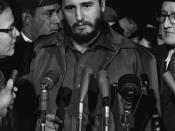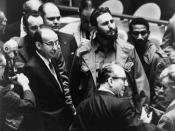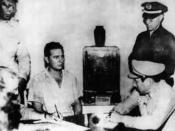In the three years that followed the Cuban Revolution, 250,000 Cubans out of a population of six million left the country. Most of these were from the upper and middle-classes who were financially worse off as a result of Castro's policies.
Of those who stayed, 90 per cent of the population, according to public opinion polls, supported Fidel Castro. However, Castro did not keep his promise of holding free elections. Castro claimed the national unity that had been created would be destroyed by the competing political parties in an election.
Castro was also becoming less tolerant towards people who disagreed with him. Ministers who questioned the wisdom of his policies were sacked and replaced by people who had proved their loyalty to him. These people were often young, inexperienced politicians who had fought with him in the Sierra Maestra.
Politicians who publicly disagreed with him faced the possibility of being arrested.
Writers who expressed dissenting views and people he considered deviants such as homosexuals were also imprisoned.
In March I960, President Dwight Eisenhower of the United States approved a CIA plan to overthrow Castro. The plan involved a budget of $13 million to train "a paramilitary force outside Cuba for guerrilla action." Over 400 CIA officers were employed full-time to carry out what became known as Operation Mongoose.
The CIA Technical Services Division was asked to come up with proposals that would undermine Castro's popularity with the Cuban people. Plans included a scheme to spray a television studio in which he was about to appear with an
hallucinogenic drug and contaminating his shoes with thallium which they believed would cause the hair in his beard to fall out.
These schemes were rejected and instead the CIA decided to arrange the assassination of Castro. He was later to complain that...


